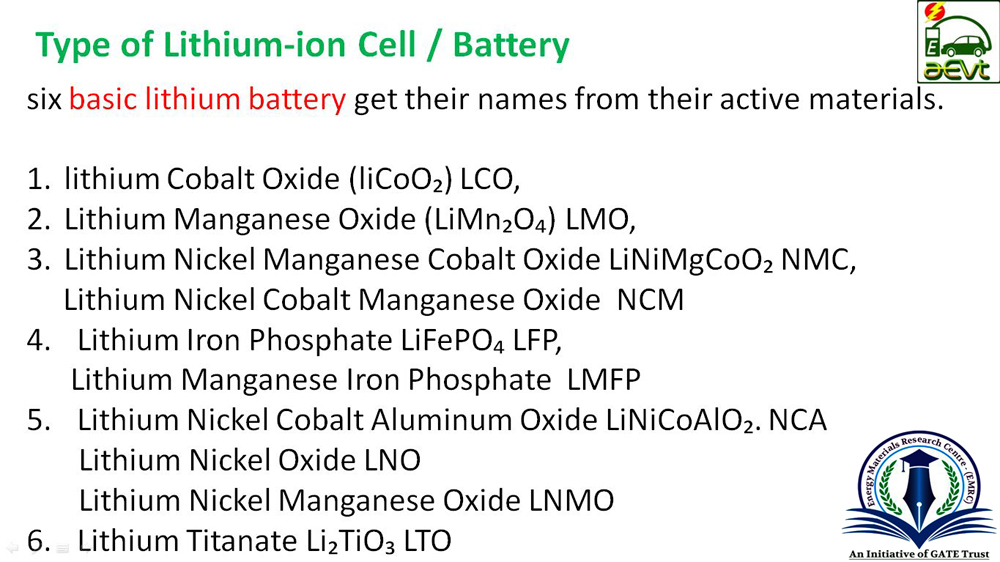Lithium ion cells cathode and anode materials

Lithium ion battery chemistry
Characteristics of lithium cell chemistry
Four Components of Li-ion Battery – Cathode, Anode, Electrolyte, Separator
Li-ion batteries consist of largely four main components: cathode, anode, electrolyte, and separator.
Cathode plays an important role in determining the characteristics of the battery
as the battery’s capacity and voltage are determined by active material type used for cathode.
The higher amount of lithium, bigger the capacity; and the bigger potential difference between cathode and anode, higher the voltage.
The potential difference is small for anode depending on their type but for cathode, the potential difference is relatively high in general.
As such, the cathode plays a significant role in determining the voltage of the battery.
The anode’s active material performs the role of enabling electric current to flow through the external circuit
while allowing reversible absorption/emission of lithium ions released from the cathode.
Electrolyte is the component which plays this important role.
It serves as the medium that enables the movement of only lithium ions between the cathode and anode.
For the electrolyte, materials with high ionic conductivity are mainly used so that lithium ions move back and forth easily.
The separator functions as a physical barrier keeping cathode and anode apart.
It prevents the direct flow of electrons and carefully lets only the ions pass through the internal microscopic hole.
Therefore, it must satisfy all the physical and electrochemical conditions.
Commercialized separators we have today are synthetic resin such as polyethylene (PE) and polypropylene (PP).
Learn more about
- lithium-ion battery cathode materials
- lithium-ion battery anode materials
- how lithium-ion batteries are made
- battery anode and cathode materials
- cathode materials for lithium-ion batteries review
- lithium ion battery chemistry
- types of lithium battery
- best lithium battery types
- what are the two types of lithium batteries
- characteristics of lithium battery
- characteristics of lithium ion battery
- characteristics of li ion battery
- charging characteristics of lithium ion batteries
- advantages of lithium-ion battery
- disadvantages of lithium-ion battery
- lithium-ion battery chemistry
- lithium-ion battery uses
- lithium battery
- lithium-ion battery components

Interactive Session

Practical & Doubt Session

E-Library Study Materials

Online Evaluation

